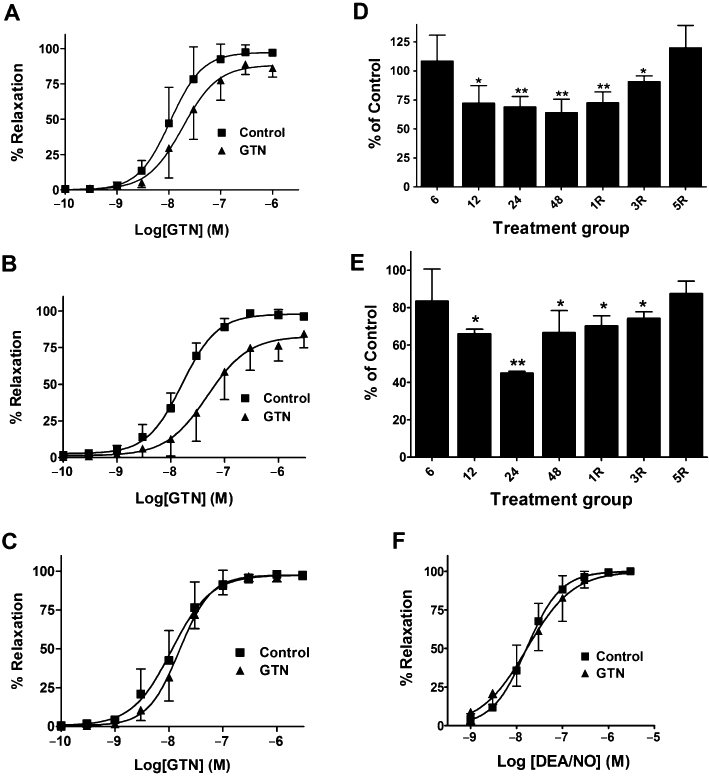Figure 2.

Effect of in vivo GTN exposure on GTN-induced relaxation of isolated aorta, and on ALDH activity and ALDH2 protein expression. (A–C) Isolated aortic rings were prepared from rats treated with 0.4 mg·h−1 GTN (GTN) or vehicle (Control) for (A) 24 h (B) 48 h GTN and (C) 48 h followed by a 1-day GTN-free period. Aortic rings were contracted submaximally with phenylephrine and cumulative concentration-response curves for GTN were obtained (n = 7–10). The EC50 values and maximal relaxation were significantly different from Control for the 24 h and 48 h GTN treatment groups (P < 0.05, Student's t-test for unpaired data). (D and E) Rats were treated with 0.4 mg·h−1 GTN (GTN) or vehicle for 6, 12, 24 and 48 h as well as 48 h GTN treatment followed by a 1-, 3- or 5-day GTN-free period (1R, 3R, 5R). (D) ALDH2 protein was determined by immunoblot analysis and immunoreactive bands were quantified by densitometry. ALDH2 protein levels in aortae (normalized to β-actin) from GTN-treated animals are expressed as a percentage of the levels in matching control animals. Data are presented as the mean percentage of control ± SD (n = 4) and were analysed using Student's one-sample t-test. *P < 0.05, **P < 0.01, significant decrease compared with Control. (E) Total ALDH activity from control and GTN-treated aortas was assessed in samples containing 100 µg of aortic protein and using 5 mM propionaldehyde as substrate. Data are presented as the mean percentage of control ± SD (n = 4) and were analysed using Student's t-test for unpaired data. *P < 0.05, **P < 0.01, significant decrease compared with Control. (F) Cumulative concentration-response curves for DEA/NO in aortic rings obtained from rats treated with 0.4 mg·h−1 GTN for 48 h (n = 6).
